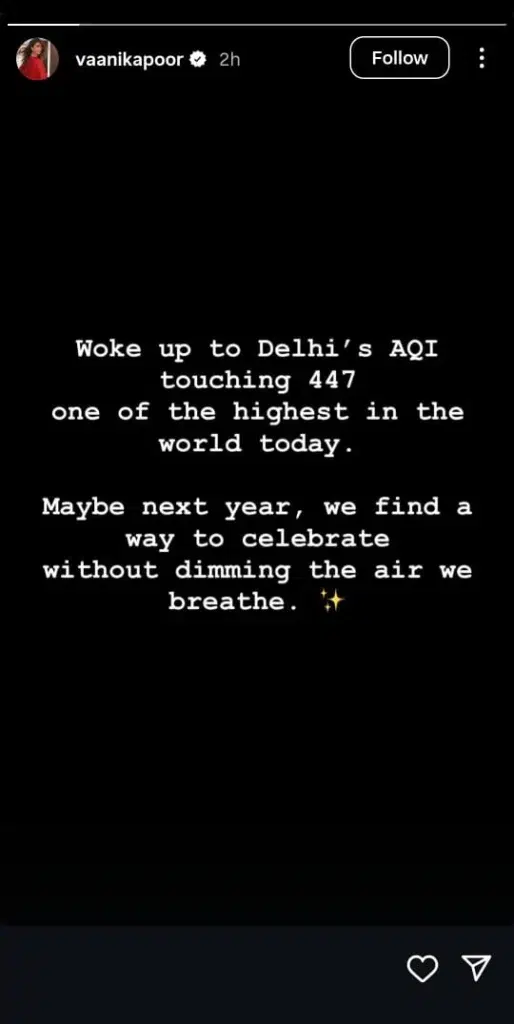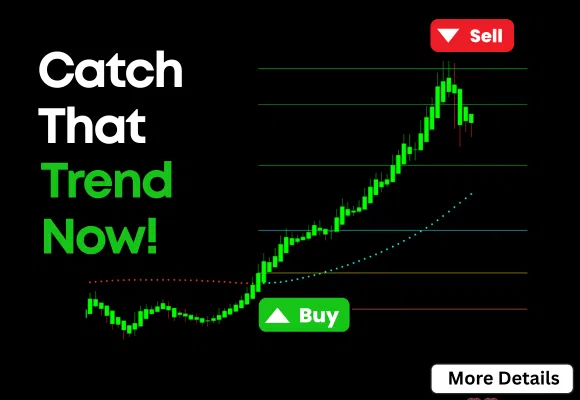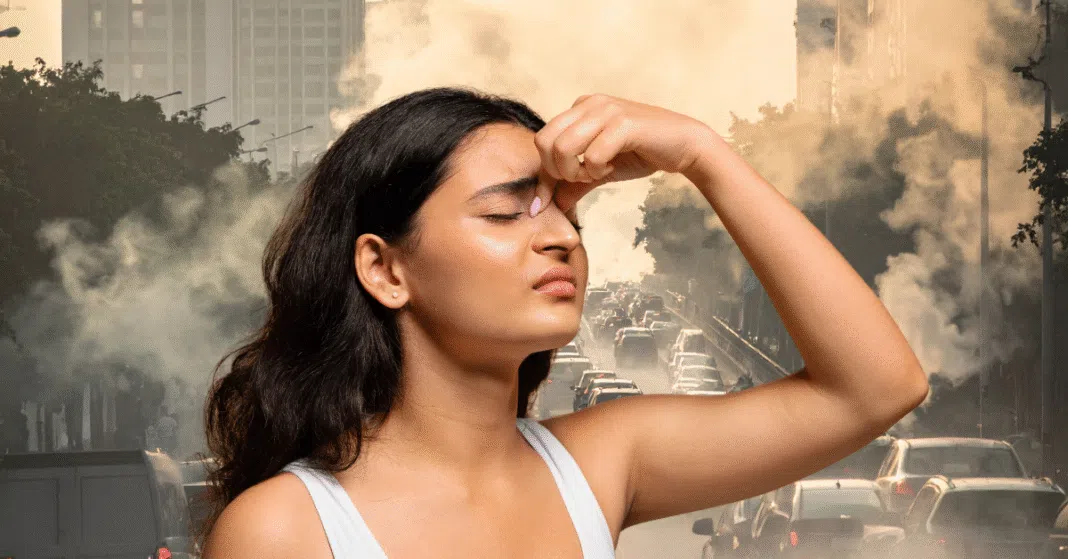Dek: As fireworks light up the sky, Delhi wakes to a toxic haze and worsening air quality — a grim reminder of India’s annual pollution crisis.
Samay in 60 Seconds
- Delhi’s AQI touched 447 — among the world’s worst — after Diwali night.
- Actor Vaani Kapoor urged citizens to celebrate without “dimming the air we breathe.”
- Fireworks and stubble burning push pollution levels into the ‘Severe’ category.
- Experts warn of health risks including cancer, heart disease, and poor brain function.
- Authorities enforce Stage 2 of the Graded Response Action Plan (GRAP) in NCR.
Info Summary Table
| Field | Details |
|---|---|
| Event | Post-Diwali Air Pollution Spike |
| Date/Time | October 21, 2025 (Morning after Diwali) |
| Location | Delhi-NCR |
| Casualties/Impact | Air quality in ‘Severe’ category; health risk to millions |
| Main People | Vaani Kapoor, Delhi Govt, CAQM, CPCB |
| Key Demands/Claims | Need for cleaner celebration methods and stricter enforcement |
| Accusations/Counterclaims | Blame game over cracker use, stubble burning, and policy failure |
| Other Key Details | PM2.5 levels exceeded safe limits by up to 20 times |
What Happened – Delhi Air Pollution After Diwali
Delhi awoke to a heavy blanket of smog on Tuesday, just hours after the Diwali festivities ended. The Air Quality Index (AQI) touched an alarming 447, placing it in the ‘Severe’ category according to the Central Pollution Control Board (CPCB). In several parts of the city, including Bawana, Burari Crossing, Jahangirpuri, and Wazirpur, AQI readings crossed 400 — a level hazardous to even healthy individuals.
The Commission for Air Quality Management (CAQM) swiftly implemented Stage 2 of the Graded Response Action Plan (GRAP) across the National Capital Region (NCR). This includes restrictions on construction, industrial operations, and heavy vehicular movement.
While the Supreme Court allowed the limited use of “green crackers” this year, violations were rampant. Fireworks continued well beyond permitted hours, worsening air quality. Some regions recorded PM2.5 levels up to 1,800 μg/m³ — nearly 20 times higher than the WHO’s safe threshold.
Vaani Kapoor’s Plea for Cleaner Celebrations

Actor Vaani Kapoor, in Delhi for Diwali, expressed concern on Instagram, writing: “Woke up to Delhi’s AQI touching 447 — one of the highest in the world today. Maybe next year, we find a way to celebrate without dimming the air we breathe.”
In an earlier interview, she had called for “a mindful and kind Diwali” — with diyas, home-cooked food, and less smoke.
Why It Matters – The Annual Smog Crisis Returns
Each winter, Delhi becomes a gas chamber — trapped under a layer of toxic air caused by firecrackers, stubble burning, vehicle emissions, and construction dust. Despite years of bans and awareness campaigns, pollution spikes remain a post-Diwali reality. The situation this year mirrors a larger failure in environmental governance and public discipline.
The health cost is staggering: studies link long-term exposure to high PM2.5 levels with 10,000 premature deaths annually in Delhi alone.
Impact on You – Health & Safety at Risk
- Lungs: Inflammation, COPD, and lung cancer risk increase.
- Heart: Air pollutants can accelerate artery damage and trigger heart attacks.
- Brain: Linked to memory decline and 56% higher risk of Parkinson’s disease.
- Eyes & Kidneys: Long-term damage from chronic inflammation.
For citizens, the immediate steps are clear — wear N-95 masks, avoid outdoor exercise, and use air purifiers indoors. Vulnerable groups like seniors, children, and those with respiratory diseases should stay indoors and seek medical help if symptoms worsen.
Samay’s Take – Time to Celebrate Responsibly
Delhi’s smog isn’t just a weather event — it’s a man-made disaster that returns each year with predictable pain. The spirit of Diwali should be about light, not smoke. Until both citizens and authorities act in unison, our festivals will continue to dim the very air we breathe.
Street FAQs
Q1: What does an AQI of 447 mean?
A: It falls in the ‘Severe’ category — dangerous for all, especially children and the elderly.
Q2: What are “green crackers”?
A: Firecrackers with reduced emissions (about 30% less polluting) — still harmful when used widely.
Q3: What is GRAP Stage 2?
A: It triggers stricter pollution control measures — curbing construction, industries, and vehicle emissions.
Q4: Can masks really help?
A: Yes, N-95 masks filter out PM2.5 particles if fitted properly.
Q5: How long will the smog last?
A: Usually until wind speed improves or rain disperses pollutants — often late November.
Sources
- Central Pollution Control Board (CPCB)
- Commission for Air Quality Management (CAQM)
- Supreme Court of India Orders
- Vaani Kapoor via Instagram + Whatsapp
- HT Interview, SAMEER App Data







